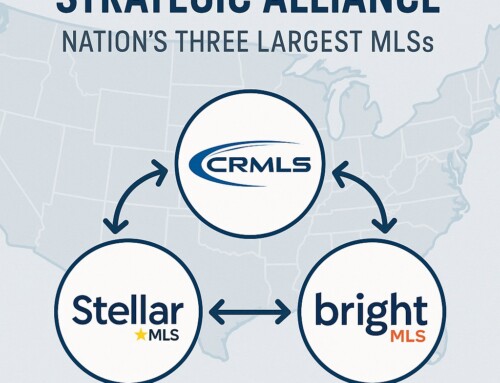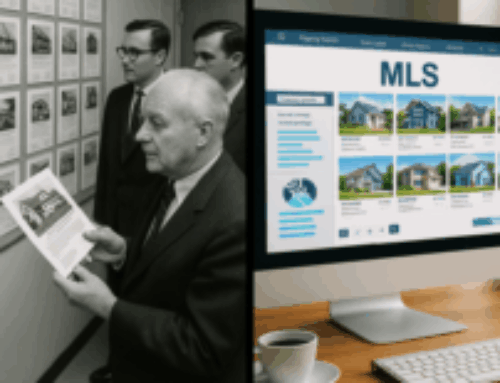Here at WAV Group, we invest a lot in business intelligence. Business intelligence is a broad term that can mean a lot of things. We define it as a 360-degree review that combines the collection of information from a variety of sources, then benchmarked against peer groups.
If you would like WAV Group to perform a business intelligence study on your company, please contact victor@wavgroup.com
Our business intelligence across the real estate industry has identified a pretty frightening broker-experience-gap. What we have learned is that brokers rarely collect enough facts to make important business decisions; the result is failed efforts and underwhelming results.
Example: Brokerage Technology Satisfaction
A great source of business intelligence that is made available to brokers every year is delivered as a member benefit from the National Association OF REALTORS®. If you have not checked out this summary article from WAV Group partner, Kevin Hawkins, about the release of the new 2022 Realtor Tech Survey – you should read it now, but I will pull some highlights to further develop this understanding of the broker-business-intelligence-gap.
According to an NAR study, the most important tools that an agent values are eSignatures, lockboxes, MLS, followed by a three-way tie in transaction management, CRMs, and video conferencing.
The best practice would be to compare and contrast this research with research from your real estate agents. When agents answer an NAR survey, they are biased around the service offered by the Association. That is not an intention of the survey, but survey bias does happen. WAV Group often combines surveys from Associations, MLSs, and the brokerage to mitigate survey bias – let me explain why.
 You cannot overcome survey bias completely, although using a third-party firm to survey agent satisfaction helps a lot. The less concern that a person has about being identified in a survey, the more truthful they are in answering the questions. Agents do not have any concern about being identified when they are answering an Association or MLS survey; there is no concern about being identified for their point of view. With Brokerage surveys, a little concern exists within. We have run surveys through Associations, MLSs, and brokerages with the exact same questions in the exact same markets and gotten three similar, but different answers from the same agents. When agents are surveyed about technology by the Association, they think of forms, lockboxes, RPR, etc. When the technology survey is the MLS, they think about the MLS system, tax record system, etc. When they are surveyed about broker technology, they think about websites, CRM, CMA, etc. If the brokerage is a franchise that offers technology, there are different answers there as well. The truth is that agents have the Association, MLS, franchise, brokerage, and technology companies all marketing to them at the same time, while simultaneously trying to drive adoption of their tools. It is wickedly confusing for agents. Therefore the collection of data by a third-party, and the collection of data from multiple sources, is so critical to gaining the right level of business intelligence to make informed decisions.
You cannot overcome survey bias completely, although using a third-party firm to survey agent satisfaction helps a lot. The less concern that a person has about being identified in a survey, the more truthful they are in answering the questions. Agents do not have any concern about being identified when they are answering an Association or MLS survey; there is no concern about being identified for their point of view. With Brokerage surveys, a little concern exists within. We have run surveys through Associations, MLSs, and brokerages with the exact same questions in the exact same markets and gotten three similar, but different answers from the same agents. When agents are surveyed about technology by the Association, they think of forms, lockboxes, RPR, etc. When the technology survey is the MLS, they think about the MLS system, tax record system, etc. When they are surveyed about broker technology, they think about websites, CRM, CMA, etc. If the brokerage is a franchise that offers technology, there are different answers there as well. The truth is that agents have the Association, MLS, franchise, brokerage, and technology companies all marketing to them at the same time, while simultaneously trying to drive adoption of their tools. It is wickedly confusing for agents. Therefore the collection of data by a third-party, and the collection of data from multiple sources, is so critical to gaining the right level of business intelligence to make informed decisions.
If you would like WAV Group to perform a business intelligence study on your company, please contact victor@wavgroup.com
Creating the right technology mix
WAV Group is fortunate to work with a lot of the top 100 brokerages in the United States supporting them with their business intelligence systems. When brokers do satisfaction research, their insights allow for business decisions that are well-informed. For example, large firms operating in multiple MLS market areas, across many Associations, did an agent satisfaction study to understand the opinions that agents have for the tools from their Associations and MLSs. The richness of comparative data is outstanding. Those firms know which Associations have the best tools. Often, you see consistency across forms solutions and lockbox solutions. For example, they know the difference in agent satisfaction between Zipforms, Transaction Desk, and DotLoop. They can also see the differences in how the Association delivers member benefits. Multiple associations offering the same product, score differently. It allows the broker to understand that the Association’s training and support is better in some places than in others. The same is true for MLS technology.
You would not believe the amount of wasted technology spent by brokers who are purchasing inferior products that duplicate better products that are offered through the Association or MLS. Simply stated, if the MLS offers a better tool that agents enjoy more, don’t be bothered, just cut that tool from your product mix and work with the MLS to tighten up integration with your other products and services through API integration.
Innovation vs. Consistency
You absolutely must consider real estate personas in Business Intelligence. There are two different personas that probably matter more than any others, and they are at the extremes of the spectrum. An agent doing fewer than two transactions is a very important cohort – so are top producers. Generally, we find that low producing agents find the technology to be too complicated. That makes sense. For an agent only using tools a few times a year, it’s impossible to keep up. This is where innovation really hurts a brokerage. If agents need to relearn a software for the few times in a year that they use it, then it is too complex and time consuming. Low producing agents are the biggest opportunity for profit growth in a brokerage since commission splits favor the broker more than the agent. Do the math across your firm – forecast your EBIDA if your low producing agents doing one deal a year. How does that impact your profit? Consistency is important to low producers. They want certainty that when they go to use a product or service, it has not changed so much that they need to contact support to get their work done. By not innovating tools for low producers, this typically leads to improved margins. Static technology is typically priced better than the flashy, complicated, feature-rich, new stuff and requires lower levels of training and support. Do you really need transaction management if you only have one deal a year?
The opposite side of the spectrum is top producers (which includes teams). Generally speaking, top producers rarely use the technology of the brokerage because it lacks the features that allow them to manage an enterprise-sized sales and transaction funnel. This cohort requires a lot of study, and typically the study of top producers needs to be looked at in two ways. You parse their answers to surveys and follow up with in person calls or meetings. These agents want to know that you value them enough to engage with them, personally. Top producers need efficiency, so they typically go outside of the brokerage to purchase solutions that meet their needs. This is horrible for the brokerage and leads to breakage.
Should brokerage charge for technology?
The NAR study provides an interesting piece of data about brokerage technology fees. Forty-seven (47%) of realtors said that their brokerage charges for technology and that it is a reasonable fee. Do you charge today? Do you know if your fee is reasonable? Thirty-eight percent (38%) say that their brokerage does not charge a technology fee. Even when technology is not charged for, it has value. Do you understand this value for your company? Twelve percent (12%) of agents say that the price they pay for broker provided tech is not worth it. Yikes! You do not want to be in that group as a brokerage.
When you have benchmark data like this, you need to contrast it with data you collect on your own agents. Moreover, you need to collect this data on key competitors. Consider this scenario – your brokerage charges for technology and your agents are highly satisfied for the value they receive, where a key competitor does not charge for technology, and their agents believe that the tech offered by that competing firm has low value. If you have a low performing agent that you are recruiting from that competitor, your narrative is that they will sell more real estate using your technology and that they should have confidence in the technology fee – which will be a new business expense for them. The competitor’s top producing agents may be overspending on technology to compensate for their current broker’s lackluster tech offerings. The narrative for joining your brokerage is that it can save them money and likely improve their performance. The very same narrative is useful in agent retention conversations.

Using Business Intelligence to make better decisions
As you can imagine, when you drill down into details like this and offer data that backs up your statements, you are making better decisions. If your business intelligence points to areas of dissatisfaction, or areas where a competitor has a leg-up, then you can make decisions that close the gap. The battle for winning market share is local and requires hand-to-hand combat. You need to win hearts and minds. Every good decision you make solidifies the confidence that your agents have in your firm. Every poor one encourages them to answer a recruiting call.
Today’s real estate market is savage. If you sit idle and wait for the market to recover in two or three years, it may be too late for your firm to remain competitive. Right now, you need to be 100% obsessed with market share, not volume. The market is down for everyone, but if your competitor’s business is dropping faster than yours, you are picking up market share. Let’s win this together.




